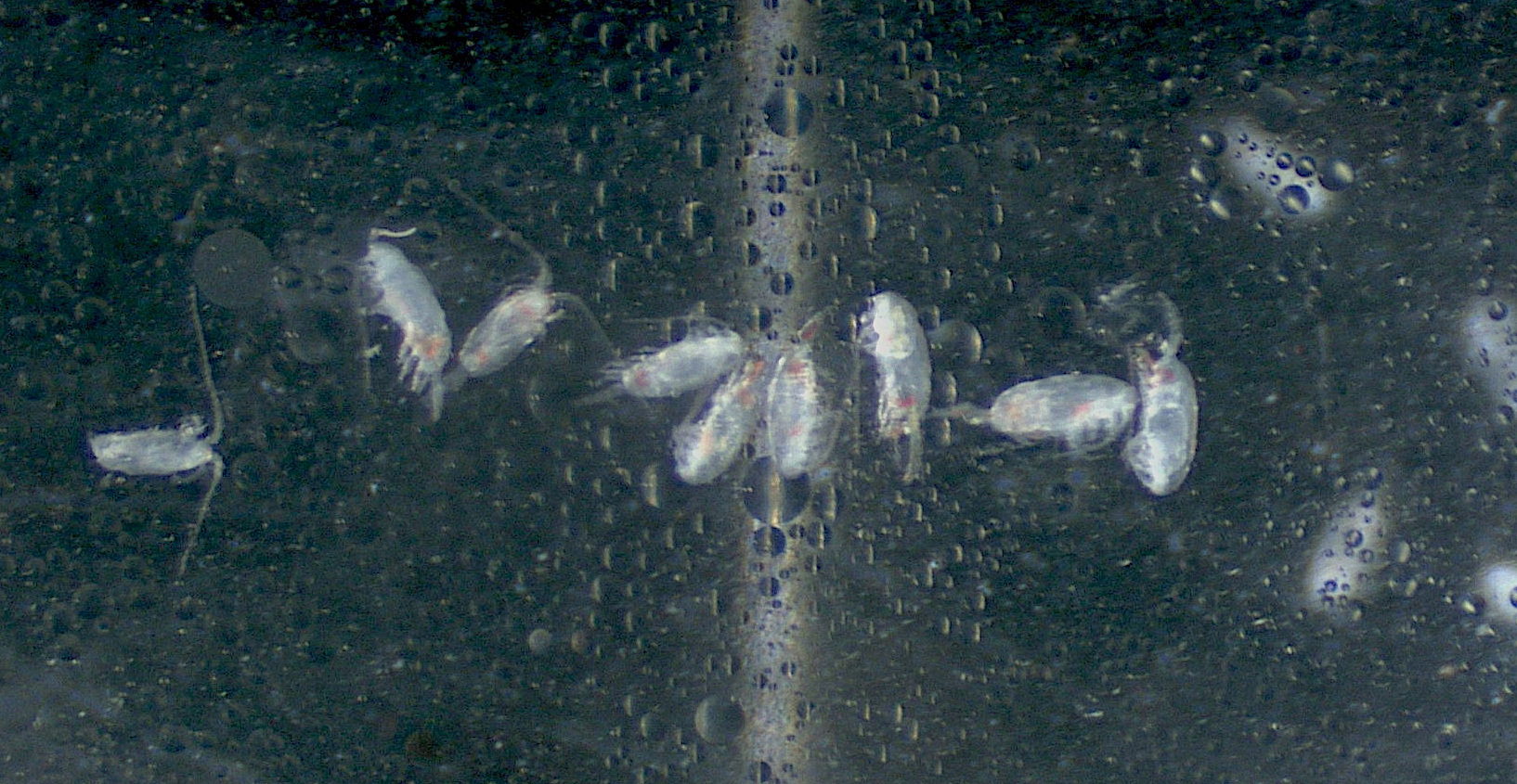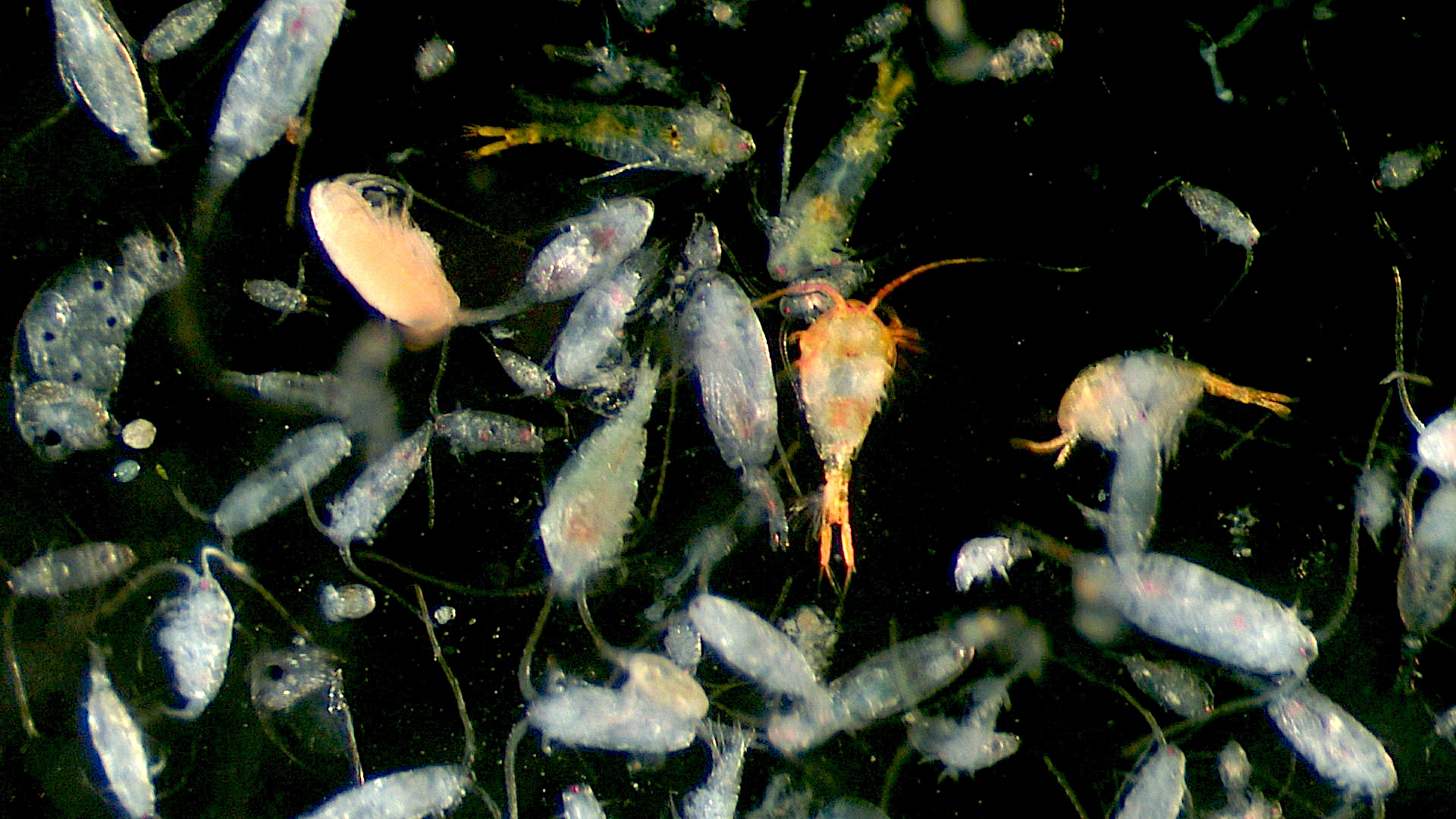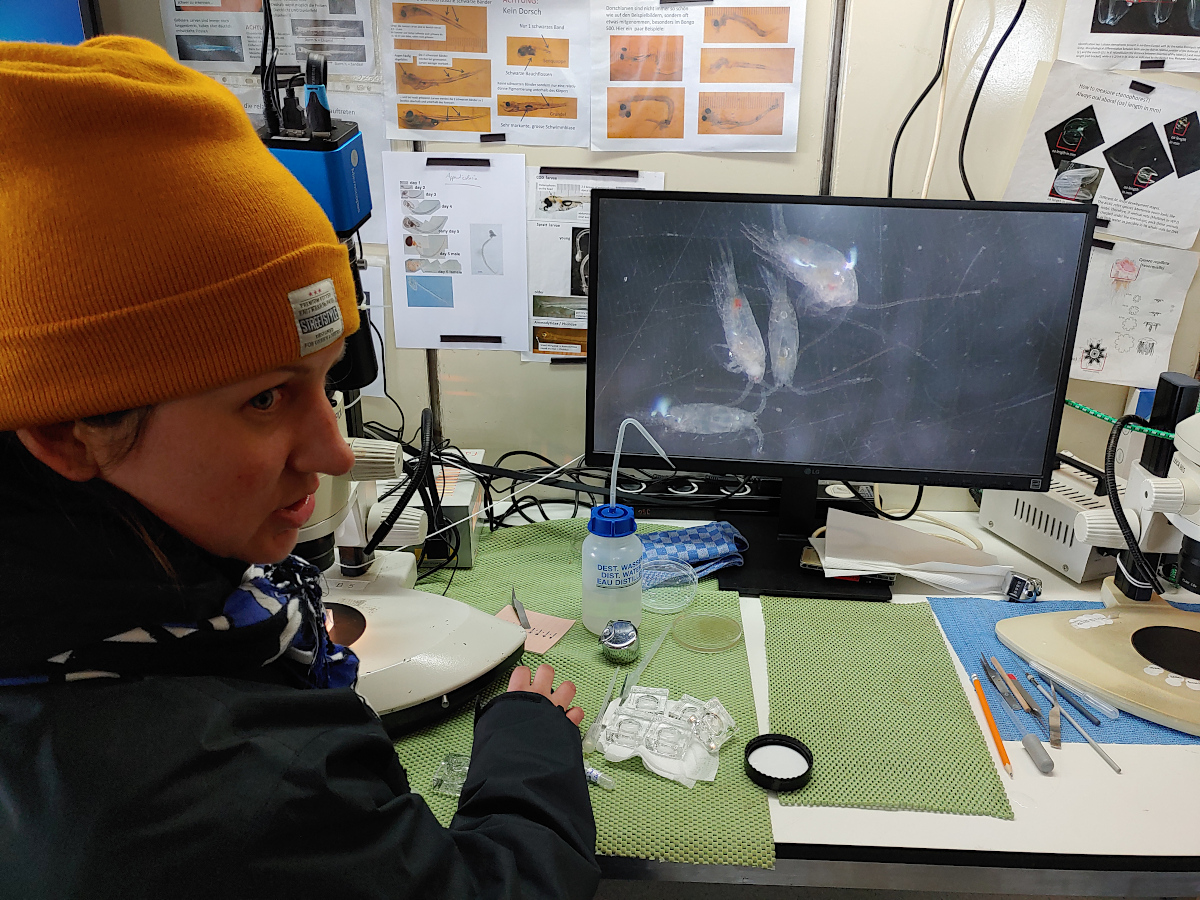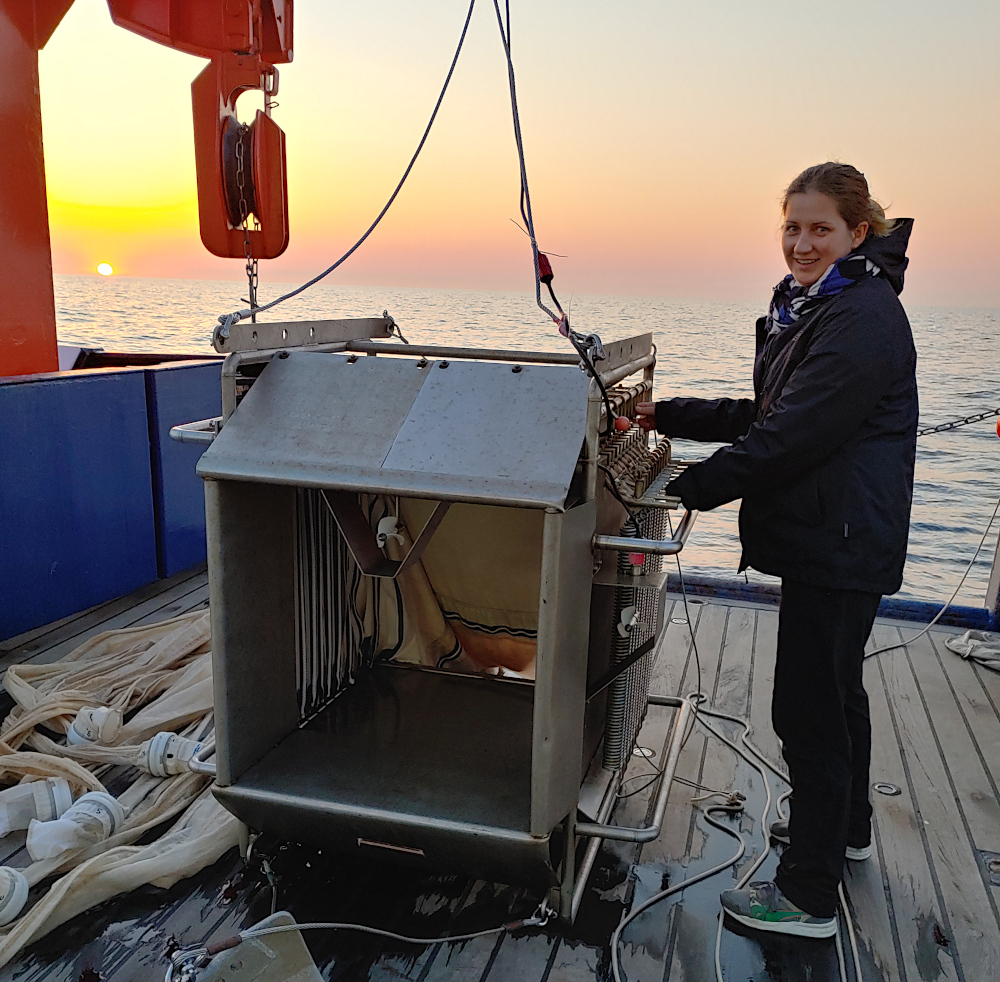Today scientific cruise party member Elvita is going to take you even deeper into the world of plankton (aka “the diverse collection of organisms in the water column that are unable to propel themselves against a current”). Here is what she writes:
While we were all excited about finding an early cod larva in our Bongo and Multi nets, it quickly became clear that food webs are actually way more complex after delving deeper into the plankton world. We were amazed by the marvelous diversity of various copepod species that we could discover in real-time, and especially during night sampling, we enjoyed observing their dance performances under the microscope.
Station work did not stop us from continuing to wonder at these little crustaceans with their impressive antennae and even the fisheries biologists started to embrace the fascination of zooplankton. In our net tows it was possible to identify many adult copepod stages (e.g., Centropages sp., Acartia tonsa, Temora longicronis and Pseudo-/Paracalanus spp). However, this was not all the plankton world had to offer as we could also identify cladocerans (e.g., Podon spp. and Evadne spp.) together with beautiful polychaetes that were surrounded by thousands of appendicularians.

The copepods contained a vast variety of different pigments – it was a true rainbow of colors! Many crustaceans can synthesize the red carotenoid astaxanthin from yellow and orange precursors in their diet, and for this reason they appear reddish under our microscope. Moreover, we were also amazed how such tiny copepods (Pseudo-/Paracalanus spp). carry lipids in their so called “oil sac”. Because of the pressure in the plankton nets, some of these copepods burst and caused the entire sample to be covered in a highly visible oily microlayer. This complicated our life sorting larvae under the microscope, but the impressive amount of such fatty copepods swimming around could be good news for fish larvae in the Bornholm Basin. Hopefully some fish stocks are going to benefit from the zooplankton feast this year!

Finally, it is obvious that such vast plankton diversity is real-time evidence that every individual, even a little copepod or fish baby, has its unique role in the sea. We can only confirm that food web knowledge matters and can be better studied during such collaborative work by fish and plankton experts, in a real-time, and on the sea!


Alles cool!
Hello Elvira, I would like to contact you – I want to write on ma Science-Blog Meertext an article about your plankton research. Best regards, Bettina